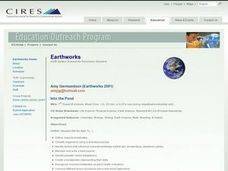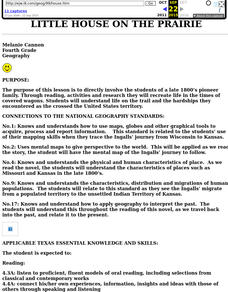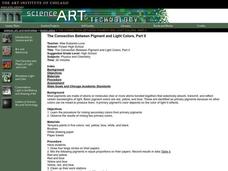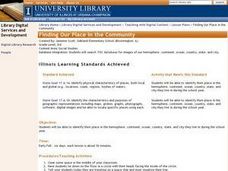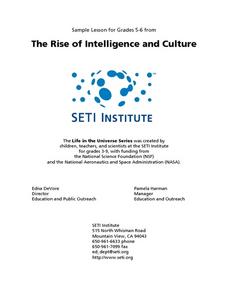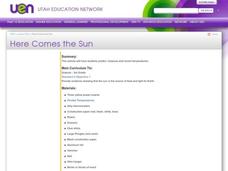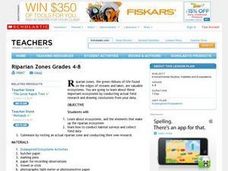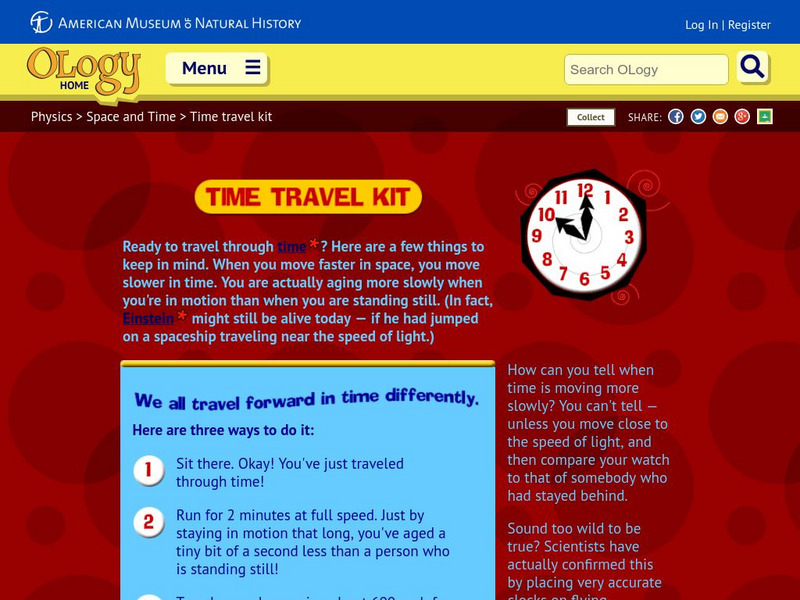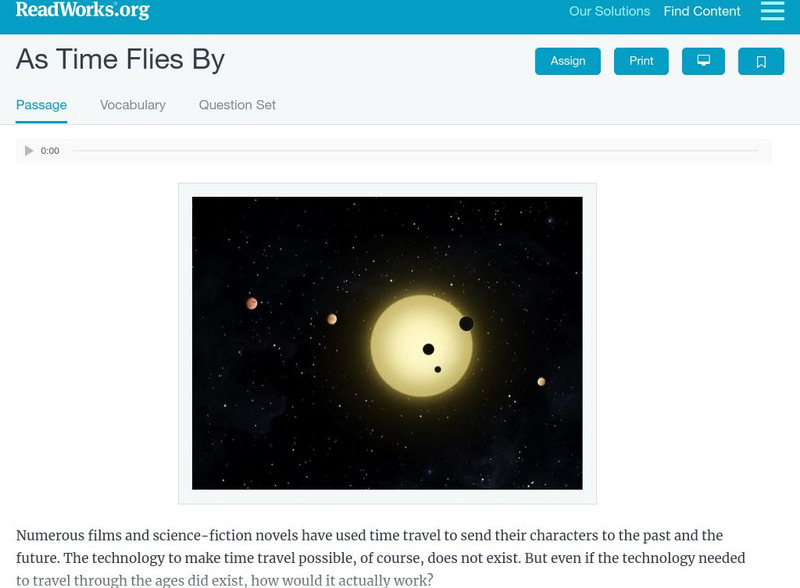Curated OER
Oregon Trail Landforms
Fourth graders explore landforms located along the Oregon Trail. They discuss the significance of the Oregon Trail, identify visual landforms, and explain the definition of each one. Students complete worksheets, color, and label maps.
Curated OER
Oregon Rainshadows
Students brainstorm list of possible highest locations in Oregon, identify and label places from list on map using color code, and discuss and identify causes of a rain shadow.
Curated OER
Robert Boyle's Informants
Students review and discuss the importance of Boyle's informants and how he sometimes relied on information from those with experience of the wider world to substantiate his scientific theories. They complete the worksheet, answering...
Curated OER
Into the Pond
Seventh graders use a pond to explore macroinvertebrates and other organisms. They use a dichotomous key to classify the organisms and maintain a journal recording their findings.
Curated OER
Marine Animals on the Move
Students complete a project based on collecting satellite data aimed at finding connections between organisms and the environment. They create a final project working with a partner to share with the class.
Curated OER
Aircraft Trajectory Problem Set
Learners read text from a NASA Web-based textbook then demonstrate an understanding of the text by using it to complete an activity on aircraft trajectories.
Curated OER
Little House On The Prarie
Fourth graders focus on the family's journey from Wisconsin to Kansas and their life there among the Indians.
Curated OER
The Connection Between Pigment and Light Colors
High schoolers learn the procedure for mixing secondary colors from primary pigments and observe the results of mixing two primary colors.
Curated OER
How We Get From Here to There
Students recognize various types of movement people rely on to get from one place to another, locate the forms of movement on a map and choose one form of movement and research its path.
Curated OER
Don't Dent The Car
Students explore self space while learning how to interact with others. They walk around the room, then sto on the freeze signal.
Curated OER
Finding Our Place in the Community
Third graders search TDC database for images of our hemisphere, continent, ocean, country, state, and city. They identify their place in the hemisphere, continent, ocean, country, state, and city.
Curated OER
Alphabet Soup
Students play a game in which they use the letters of the alphabet and different motor skills for review.
Curated OER
North America Knowledge
Second graders move around a large map of the North America drawn on the playground. They follow the directions called out by the teacher. They may also develop their own tasks for other students to follow.
Curated OER
Extraterrestrial Communication: Can We Talk to Anybody Out There?
Students examine the possibilities of communication with other living organisms within our solar system through research and hands on activities, as well as observing and analyzing teacher demonstrations.
Curated OER
A Caravan Of Camels
Fourth graders discuss the role the Silk Road had in trade and commerce practices in China during different Chinese dynasties. The lesson plan evaluation consists of individual student writing assignments.
Curated OER
Here Comes the Sun
Third graders watch a video on the solar system and examine the role of the sun. As a class, they complete a KWL chart and make different color temperature pockets to use during their experiment. In groups, they make predictions about...
Curated OER
Riparian Zones Grades 4-8
Students examine and analyze the Riparian Zones found on the edges of streams and lakes. They assess why those are such valuable ecosystems and then conduct actual field research on riparian zones and conclude by drawing conclusions from...
Curated OER
Book Report Haiku
Students study another method for writing a book report using a Haiku poem. In this book report lesson, students use the Haiku poem format to write a book report.
Curated OER
Fun with Balloons
Fifth graders design their own hot air balloon. In this science lesson, 5th graders investigate how factors like weight and sizes affect a balloon's lifting power. They also write math problems based on facts written in the book "The...
American Museum of Natural History
American Museum of Natural History: O Logy: Time Travel Kit
Would you like to travel forward in time? Use this time travel kit to help you think through different ways to experience time travel. Click on the starred words to learn more about the topic.
TED Talks
Ted: Ted Ed: Can You Solve the Time Travel Riddle?
Your professor has accidentally stepped through a time portal in his physics lab. You've got just a minute to jump through before it closes and leaves him stranded in history. Your only way back is to grab enough colored nodules to...
Read Works
Read Works: As Time Flies By
[Free Registration/Login Required] An informational text about time travel in the movies. A question sheet is available to help students build skills in reading comprehension.
PBS
Pbs Teachers: Scientific American: Dragon Science: Time Travelers
Explore the work of archeologists and anthropologists by building a 3-D clay representation of a human skull to look for clues to a person's physical form, ethnic origin, behavioral patterns, health history and social standing.





